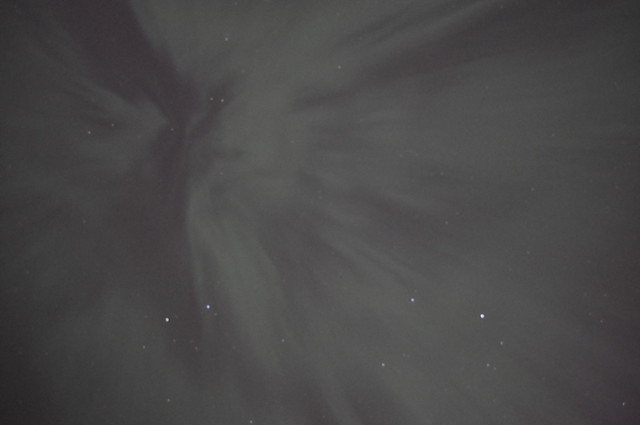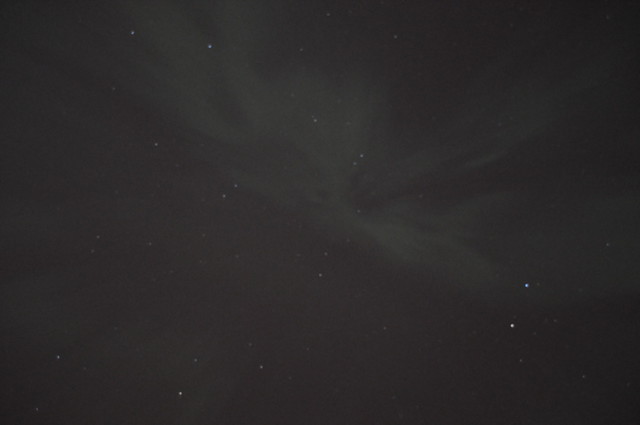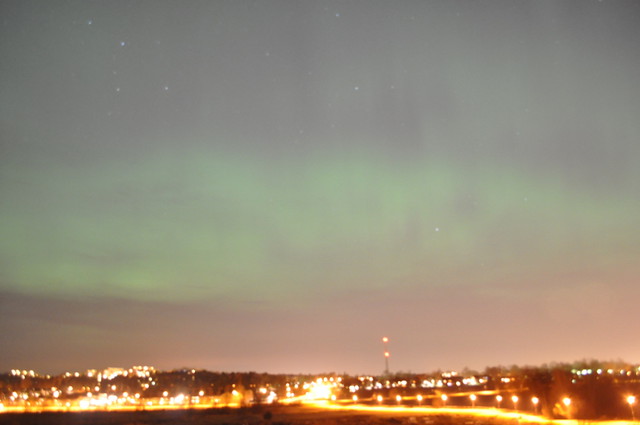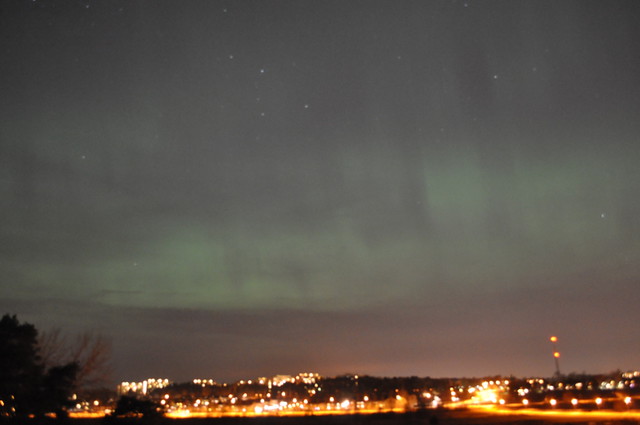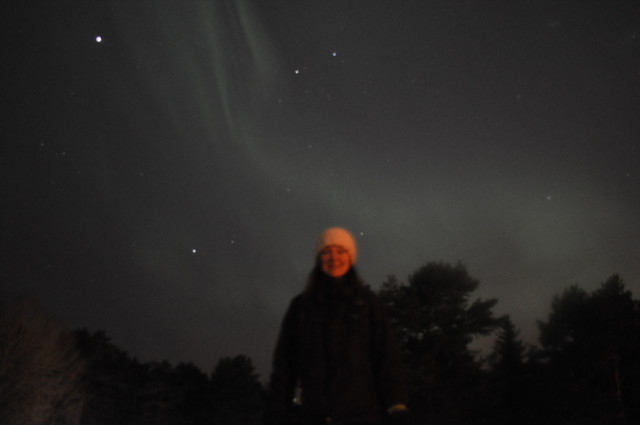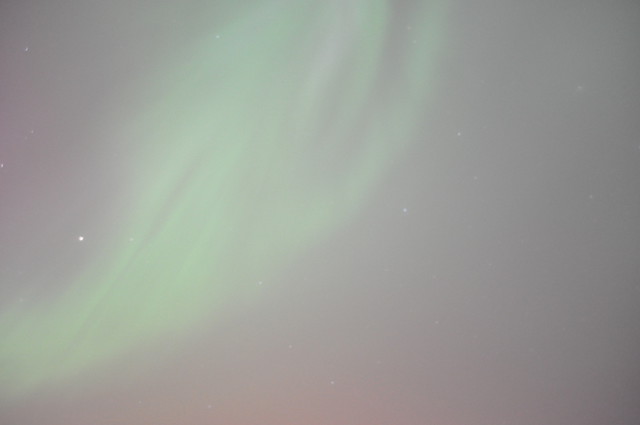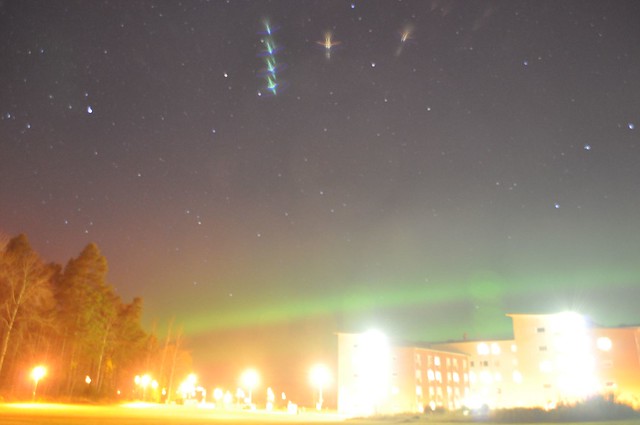Things have been very busy around here! Last night Gerald Lehmacher's four Turbopause rockets launched. They were pretty neat to watch too. The rockets were smaller than our rocket (only reaching about 100km, whereas we will go to about 600km), but they had a chemical release of TMA that leaves a glowing trail you can see. Then they use ground optics to study the turbulence in the upper layers of the atmosphere. Plus you can basically see the TMA trail from all parts of Alaska which is really cool.

Here is a photo I took of the third rocket launch.

Here is a photo from Craig Heinselman, who has a better camera and better photography skillz. I really like this picture because you can see the rocket, the aurora, and the LIDAR beam. The Lehmacher team was using the
LIDAR to see if there was enough turbulence to launch.

This is Craig Heinselman's photo of the TMA trail from one of the rockets. There was a TMA release on the upleg and on the downleg. The upleg portion is higher up on this photo and more blurred. The downleg portion was not a pulsed stream, instead of steady, from what I could tell, and you can kind of see that in the bottom line of TMA.
So that provided us with tons of fun and entertainment. We didn't leave the range until after 3am, since each of the rockets were launched 30 minutes or slightly more apart. Today we actually get to report to the range a little later though, since they are doing playbacks for the Lehmacher mission and won't be ready for us right away.
It has been awhile since I posted anything here, and even though we haven't launched our rocket, we have been keeping busy with other things. On a side note, I am trying to keep our
group webpage updated more regularly, if you want to check it out. I think I actually have all of the photos (or will have) from that site plus additional ones here.

Me in front of the Poker Flat Incoherent Scatter Radar. When I went to radar summer school last year this is what I was learning about.

Sunset as seen from TM, a good sign of clearing skies!

Darla and her weather balloons used to check winds.

The rocket on the rail. Ours is the big one. Lehmacher is the little baby rocket to the left.
And here are a few extra things just for fun:

A very serious sign in the balloon building.

A weird thing at the Museum of the North.

A cute art at the Museum of the North
OH and one last bit of interesting news. There are two BBC guys here taking photos of aurora and rockets and stuff. If you are familiar with The Planet Earth series, this is a new show they are doing that branches off of that called The Frozen Planet, which
(according to wikipedia) will show in 2011. Two years to wait for fame is not so bad.

